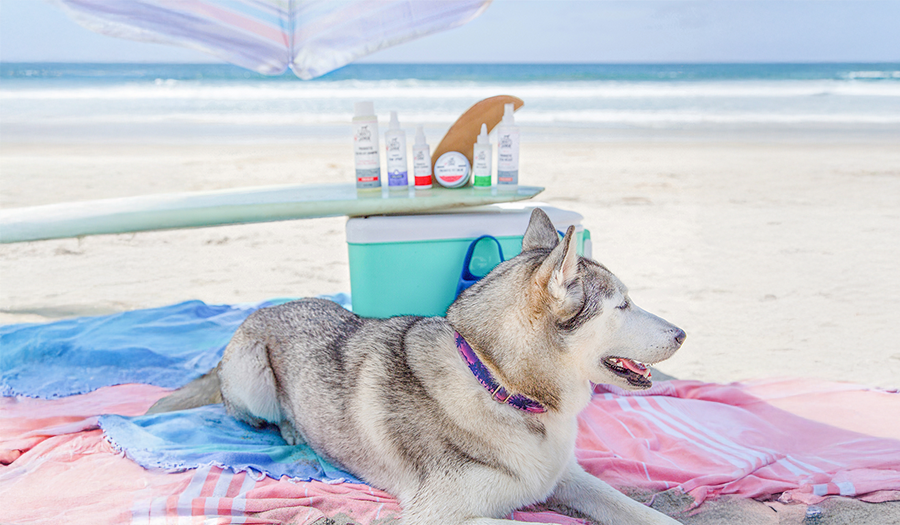Dive In: The Ultimate Guide to Dog Swimming Pools and Swim Safety

Is there anything more joyful than watching your dog paddle through the water with their tail wagging like a propeller? Dog swimming is not just fun – it’s also a great way to keep your pup active, fit, and cool during hot months. Whether you're considering a dog swimming pool at home or searching for the best dog swim tail accessories, we’ve got you covered.
Can Dogs Drink Pool Water?
While it might seem harmless, allowing your dog to drink pool water isn’t a good idea. Chlorine, saltwater, and other chemicals can cause gastrointestinal upset, leading to nausea, vomiting, and diarrhea. If your dog swallows too much pool water, it could even result in water intoxication. Always keep a fresh bowl of clean drinking water nearby to prevent them from lapping up pool water.
Can Dogs Swim in Chlorine Pools?
Yes, dogs can swim in chlorine pools, but with some precautions. Just like humans, chlorine can irritate a dog’s skin and eyes, so it’s essential to rinse your dog off thoroughly after each swim. Consider investing in specialized dog swim shoes to protect their paws from rough surfaces and maintain their grip while playing in the pool.
Where to Take My Dog Swimming
Looking for a dog swimming pool near you? Many pet-friendly facilities now offer dedicated dog swimming pools and even swim lessons for dogs who need a little help getting their paws wet. Search for ‘dog swimming near me’ or ‘dog swim camp’ to find the perfect spot for your pup to splash and play safely.
The ocean and lakes can also provide a fun playground for a more experienced canine swimmer, but always remember to check for hazards and keep an eye on your pup. Make sure there is easy access and egress from the area they will be swimming and make sure to keep sessions short to prevent fatigue and maximize fun.
Does water temperature matter?
The ideal water temperature for a dog to swim in is between 60-75 degrees. Dogs can quickly overheat in warmer water and in colder water symptoms like swim tail, also known as limp tail, can not only be uncomfortable but also early signs of hypothermia. Every breed is different, so if you are unsure about your pups level of tolerance it is best to air on the side of caution.
Do All Dogs Know How to Swim?
Contrary to popular belief, not all dogs instinctively know how to swim. Breeds like Labradors and Retrievers are natural swimmers, but breeds with short legs or heavy bodies, like Bulldogs or Pugs, might struggle. If your dog is new to swimming, consider enrolling them in dog swimming lessons or investing in a swim tail or personal flotation device for extra buoyancy and confidence.
Stay Safe in the Water
Before diving into the dog pool, remember to keep a close eye on your pet. Not all dogs are confident swimmers; even the strongest swimmers can tire out quickly. Equip your dog with a life vest, especially during their first few swims, and watch for signs of exhaustion. After each swim, rinse off chlorine and debris, dry their ears thoroughly to prevent infections, and reward them with plenty of water to rehydrate.
Other things to keep in mind
Wet environments can cause a host of issues with dogs, from ear and eye infections to dry or irritated skin resulting from contact with salt or chlorine. In addition, the often rough surfaces of a pool and pool deck, as well as occasional scraps and scratches, are almost inevitable. Here are a couple extras to keep handy if your dog can’t stay out of the water. Don’t forget, underneath that beautiful coat is skin just like ours, so a good skin care routine can not only help to keep your pup looking their best, it will allow them to continue enjoying a lifetime in the water.
-
Hyaluronic eye rinse - helps remove irritants like salt, sand, and chlorine and rehydrate the eyes.
-
Microbiome balancing ear rinse/cleaner - helps to restore balance to the ear that may be negatively affected by irritating chemicals and rinse out sand and other debris.
-
Paw balm - helps protect and rehydrate irritated paws and keep wounds clean.
-
Hydrogel - helps keep wounds hydrated and prevents them from drying out.
-
Quality microbiome balancing shampoo and conditioner - helps restore balance to the skin’s microbiome after exposure to environmental disruptors, like chlorine, wind, and salt.
So, grab a towel, some floating toys, and your dog’s favorite swim tail – it’s time to make a splash!



